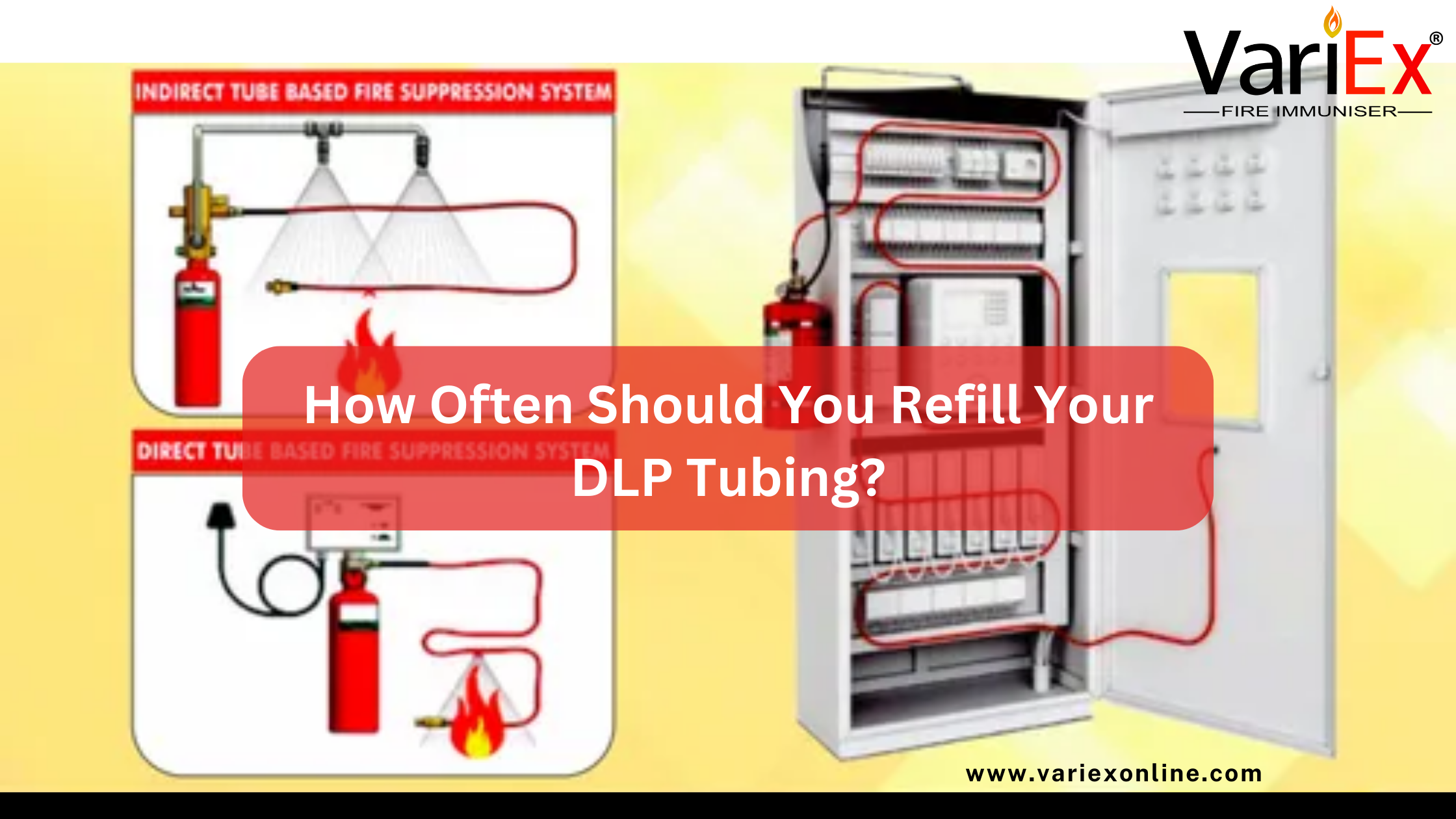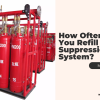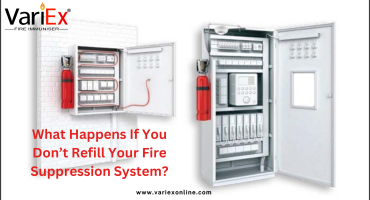![]()
Fire Immuniser
+91-7829629111
Email: info@variex.in
Varistor Technologies Pvt. Ltd.
Block-1, First Floor, Ardente Office One, Hoodi Circle, ITPL Main Road, Bengaluru, Karnataka 560048, IN
How Often Should You Refill Your DLP Tubing?
How Often Should You Refill Your DLP Tubing?
When disaster strikes, the smallest malfunction in your fire safety system can become a matter of life or death. DLP tubing (Direct Low Pressure) is a critical component in many modern fire suppression systems, but like all safety equipment, it doesn’t last forever. Over time, this tubing can lose pressure, degrade, or discharge — all of which require a timely refill to maintain full protection.
So, how often should you refill your DLP tubing? This comprehensive guide will answer that, while helping you stay compliant, reduce fire risks, and protect your most valuable assets.
What Is DLP Tubing?
DLP tubing is used in pneumatic fire detection systems where it doubles as a detector and delivery channel for fire suppression agents. Common in data centers, electrical panels, vehicles, kitchens, and heavy machinery, it offers rapid-response protection by reacting instantly to elevated heat or flame.
However, to function effectively, the tubing must be filled with the correct extinguishing agent and maintained under optimal pressure. This makes scheduled refills an essential part of your fire safety plan.
How Often Should You Refill Your DLP Tubing?
Generally, DLP tubing should be refilled every 12 to 18 months, depending on your environment, industry regulations, and whether your system has been activated. Some high-risk environments may even require a refill every 6 months.
The best approach is to align refill intervals with your fire safety inspection schedule and remain vigilant for signs of deterioration or pressure loss.
Key Factors That Influence Refill Frequency
System Activation: If your fire suppression system discharges, even partially, a refill is required immediately.
Environmental Conditions: High heat, humidity, and chemical exposure can accelerate wear.
Vibration & Movement: Mobile systems (vehicles, machinery) cause tubing stress and earlier fluid loss.
Regulatory Standards: Local fire codes or international standards like NFPA or ISO may dictate refill timelines.
Type of Agent Used: Some suppression agents degrade faster than others, requiring more frequent top-ups.
Refill Intervals by Application Type
To make it easy, here’s a breakdown of recommended refill frequencies based on the setting:
| Application | Recommended Refill Interval | Why It Matters |
|---|---|---|
| Commercial Kitchens | Every 6–12 months | High heat and grease can degrade tubing quickly |
| Data Centers | Annually | Sensitive electronics require constant protection |
| Industrial Machinery | Every 12 months | Mechanical vibration accelerates tubing fatigue |
| Public Transport (Buses) | Every 6–12 months | Exposure to extreme conditions and movement |
| Residential Properties | Every 18 months | Lower exposure but still needs compliance |
| Electrical Control Panels | Annually | Enclosed spaces heighten fire risk |
| Battery Storage Rooms | Every 6–9 months | Fire hazards from thermal runaway make frequent checks vital |
Top Signs That Your DLP Tubing Needs Refilling
Even if you’re within your refill timeline, be aware of these red flags:
Pressure Drop: Monitor gauges. A sudden drop means a leak or discharge.
Visible Wear: Discoloration, cracking, or brittleness are signs of age or chemical reaction.
Failed System Tests: Any irregular diagnostic result should trigger a refill and inspection.
Triggered Fire Alarm: Even if there’s no visible damage, your system could have discharged.
Fire Code Requirements for DLP Tubing Refilling
Most fire safety regulations recommend or require periodic inspection and refilling of suppression systems. Depending on your country or region, here are some common standards:
NFPA 17 & NFPA 2001 (USA): Require biannual inspections and annual system testing.
ISO 6183: Calls for periodic maintenance and recordkeeping for gaseous fire suppression systems.
Local Authorities: May have stricter rules for commercial and public buildings. Always consult your AHJ (Authority Having Jurisdiction).
Failing to meet these requirements can result in fines, loss of certification, or invalidated insurance.
What Happens During a DLP Tubing Refill?
While the exact process can vary by system type, a refill generally includes:
System Deactivation – The fire suppression system is shut down to avoid false activation.
Inspection – A technician checks the tubing for leaks, wear, and damage.
Refill – The suppression agent is replenished to manufacturer-recommended levels.
Repressurization – The system is returned to its specified operating pressure (usually 175–200 psi).
Testing – Diagnostic testing ensures the system is fully functional before reactivation.
Only trained, certified professionals should handle refilling to avoid risks and maintain compliance.
Risks of Delaying DLP Tubing Refill
Refusing or forgetting to refill your tubing on time could put you at risk of:
Complete System Failure during an emergency.
Legal Liability if fire safety codes aren’t followed.
Insurance Rejection for fire-related damage claims.
Increased Downtime due to longer system re-certification and repairs.
Higher Costs if minor wear turns into major damage.
Best Practices for Scheduling and Documentation
Use a Refill Logbook: Document each refill, test, and inspection.
Digital Reminders: Use calendar apps or fire safety software to set alerts.
Align with Fire Drills: Coordinate refills during annual safety events.
Partner with Certified Technicians: Ensure professional handling and correct refill agents.
Store Refill Reports: For audits, insurance verification, and legal compliance.
Should You Refill or Replace Your DLP Tubing?
While refills are routine, some signs may indicate it’s time for full replacement:
The tubing is over 7 years old
Multiple leaks or cracks have appeared
Repeated pressure failures
Tubing fails flame or heat tests
Replacing worn tubing can reduce system downtime and restore full protection faster.
Advancements in Smart Refill Monitoring
Modern systems now integrate with smart building technology to automate maintenance:
Pressure Sensors send alerts for low agent levels.
Thermal Imaging identifies hotspots or tubing degradation.
Remote Monitoring Dashboards allow facility managers to track refill schedules across buildings.
These innovations help organizations avoid human error and streamline compliance.
Conclusion
Refilling your DLP tubing may seem like a minor task — until it isn’t. When lives and property are on the line, neglecting fire suppression system maintenance can result in catastrophic failure.
For most environments, a 12-month refill schedule is the gold standard. In high-risk or high-use areas, 6-month intervals may be needed. Always follow local fire codes, monitor your system's condition, and use certified technicians to handle refills.
Your fire safety system is only as strong as its weakest component. Make sure DLP tubing refills aren’t your Achilles' heel.
Frequently Asked Questions
Most systems should be refilled every 12–18 months, or after any system discharge.
No. Always use a certified fire safety technician to ensure safe and compliant refilling.
Your system may fail during a fire, and your insurance or certifications may become invalid.
If it’s over 7 years old, brittle, or shows signs of cracking, it’s time for replacement.
Yes, advanced systems now offer automated refill alerts and remote monitoring via BMS platforms.
Final Say
At VariEx.in and VariexOnline.com, we specialize in supplying and installing top-quality fire fighting systems and equipment. From fire extinguishers to advanced suppression systems, we offer comprehensive solutions tailored to your needs. Our experienced team ensures precise installation and maintenance for optimal safety.
Trust VariEx for reliable fire protection. Contact us online or call 7829629111 to learn more.
We specialize in manufacturing, supplying, and distributing a comprehensive range of fire fighting equipment, including state-of-the-art fire extinguishers. Read our most searched blogs and find interesting information on topics such as how to use a fire extinguisher, how to calculate fire fighting water tank capacity, fire extinguisher refilling, obtaining a Fire NOC, understanding fire fighting systems, types of fire protection systems, the fire hydrant system, and the fire sprinkler system. These resources provide essential knowledge for ensuring safety and compliance with fire safety regulations. Additionally, you can explore guides on the maintenance of fire protection equipment, the latest advancements in fire safety technology, and best practices for fire risk assessment and management.
Our expertise extends to fire alarm systems, fire hydrant systems, and fire suppression systems, including fire sprinklers. Each product meets rigorous international standards for reliability and performance, ensuring effective fire safety products tailored to diverse applications and industries. Additionally, we are providing Fire Extinguisher Refilling and AMC services to ensure ongoing maintenance and operational readiness of fire safety equipment.
"WHAT YOU CAN READ NEXT"
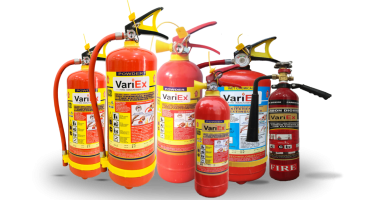 Read more +24 November 2023 in Fire Extinguisher
Read more +24 November 2023 in Fire ExtinguisherWhat types of fire extinguishers are available for different fire classes?
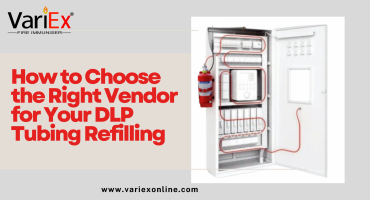 Read more +11 April 2025 in Fire Suppression
Read more +11 April 2025 in Fire SuppressionHow to Choose the Right Vendor for Your DLP Tubing Refilling
 Read more +10 April 2025 in Fire Suppression
Read more +10 April 2025 in Fire Suppression

